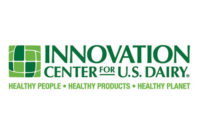The Innovation Center for U.S. Dairy released voluntary practices and protocols for enhanced dairy traceability. The practices were designed by processors for processors to increase global competitiveness, help guide future requirements of the Food Safety Modernization Act and, in the rare event of a safety issue, quickly isolate products to protect public health and prevent brand damage. The Innovation Center was established under the leadership of dairy producers through the checkoff program.
In a world of heightened food safety concerns, the protocols should help reinforce customer and consumer confidence in U.S. dairy products.
The protocols provide an invaluable guide for processors implementing new traceability systems. Processors with long-established traceability procedures can utilize the protocols as a “gap analysis” tool.
“Even processors that already have a system in place stand to gain real business benefits simply by comparing their current system to these best practices,” said Dermot Carey, senior vice president of the ingredients division at Darigold, Seattle, and chairman of the Innovation Center’s traceability subcommittee that developed the practices.
An in-depth guidance document, available for download at usdairy.com, explains the traceability guidelines, which do not affect on-farm practices.
“It goes beyond risk management,” said Carey. “It’s also the day-to-day improvements in traceability — such as increasing labeling consistency and improving workflow — that make such a difference.”
Carey’s subcommittee examined practices not only in the United States but among competitors in Europe, South America, Asia and Oceana. It wrote draft guidelines, sought feedback from fellow processors, tested the guidelines and made revisions before releasing the final protocols on Sept. 10.
They stress these three pillars of traceability:
- Modeling physical plants to know where new lots enter and where products transform
- Creating a lot identifying mark that is easily recognized and used by customers
- Enhanced record-keeping that will assist in expedient and effective recall capability
Extensive testing was conducted in a pilot study of six processors representing various dairy sectors, including nonfat dried milk, whey powder, cheeses and fluid milk. Most already had traceability systems in place but still came away with actionable insights.
A 21-point checklist
Scott Hall, corporate quality manager for Denver-based Leprino Foods Co., said that although he and his team felt that the company had a “very sound” traceability program, they saw participation in the pilot study as an opportunity to compare against a 21-point checklist. His main takeaway? Even if you have a strong program, there are always things you can learn.
Leprino revisited the company’s recall process and aligned it with ingredient entry points to find opportunities for improvement. Areas getting further study include nonmilk bulk material storage and formal tank status setting protocols.
“It is fairly easy, and a good exercise, to match those entry points to our HACCP plan to evaluate potential food safety risks,” Hall said, adding that the lessons learned during the pilot study will be communicated to all of the company’s facilities and vendors.
“This helps strengthen not only our program, but the programs of our vendors,” Hall said. “That is a huge takeaway when you are dealing with global food networks. It did not necessarily change our operations, but it did lead us to evaluate areas such as milk receipts, where we can gain clarity on recall responsibility with our vendors to avoid confusion in the case of a recall event. It also helped to clarify areas where manual tasks need to occur and confirmed the importance of routine testing of the system.”
Locating potential gaps
Another pilot study participant, Kansas City, Mo.-based Dairy Farmers of America, found the protocols to be a “comprehensive, straightforward and helpful” measuring stick to assess its current traceability practices, said Helena Soedjak, DFA’s senior director of quality assurance and compliance.
“Our goal was to apply any study findings to address potential gaps,” she said. “The guidelines were developed by subject-matter experts who contributed best practices from well-respected dairy companies across the nation. If the test reveals nothing to add or modify, it will at least provide assurance that a good system comparable to a leading benchmark is in place.”
Soedjak worked with the plant manager and quality assurance manager at DFA’s Fort Morgan, Colo., manufacturing facility. They were pleased to learn it is consistent with the guidance document. Similar assessments will be done at other facilities, including DFA’s new plant in Fallon, Nev., which will open at the end of 2013.
Goal: 80% industry commitment
Five processors, accounting for more than 20% of U.S. milk production, have already committed to adopting and applying the traceability practices. They are Darigold; Glanbia Foods, Twin Falls, Idaho; Hilmar Cheese Co., Hilmar, Calif.; Leprino Foods and Michigan Milk Producers Association, Novi, Mich.
In the coming months, all processors will be asked to adopt the “U.S. Dairy Traceability Commitment.” The goal is to see commitments covering at least 80% of the U.S. milk supply by September 2014.
“We’ve got a chance to really set ourselves apart from the pack globally while simultaneously playing a major role in influencing FSMA-required guidelines,” Carey said. “We’re not going to pass up that opportunity.”
To make the U.S. Dairy Traceability Commitment, contact traceability subcommittee member Vikki Nicholson at vnicholson@usdec.org. Learn more at usdairy.com.
A 21-point checklist
Receiving
- Farms on each load can be identified by receiving record or shipper.
- For cream, condensed, sugars and others, the Lot Identifying Mark ties to shipper’s records.
- Loads are recorded with silo destinations.
Warehouse
- Lot Identifying Marks recorded when received match shipper’s records.
- Lot Identifying Marks recorded are same as is used by all operators at time of process use.
Process Areas
- KDEs – Lot Entry Points are identified and listed.
- Lot Identifying Marks are being recorded as ingredients are added.
- Critical Tracking Events are identified and listed.
- Critical Tracking Events (examples: silos, tanks, mixers) are not filled and emptied at the same time.
- Critical Tracking Events are documented.
CIP
- CIP type designated for Critical Tracking Event equipment. (Full, sanitize)
- CIP occurs on raw silos before refilling.
- CIP resets Critical Tracking Event lot when complete.
Final Products
- Product Lot Identity clearly identifies manufacturing lot.
- Lot Identity is human readable and electronically readable to the customer.
- Lot Identifying Marks are recorded for packaging materials.
Records
- Critical Tracking Event listings are current.
- KDE – Lot Entry Point records are current.
- Final products can be linked to Lot Identifying Marks they contain.
- Lot Identifying Marks recorded are consistent throughout the facility.
- Common points of convergence in products (Lot Identifying Marks) can be identified.
Source: Innovation Center for U.S. Dairy, Rosemont, Ill.



